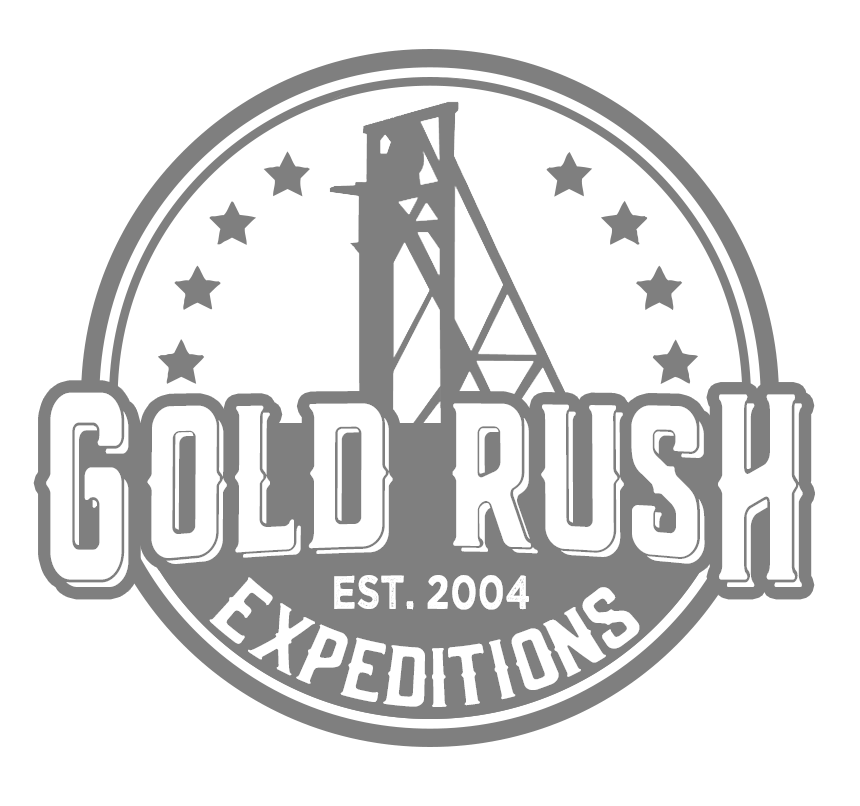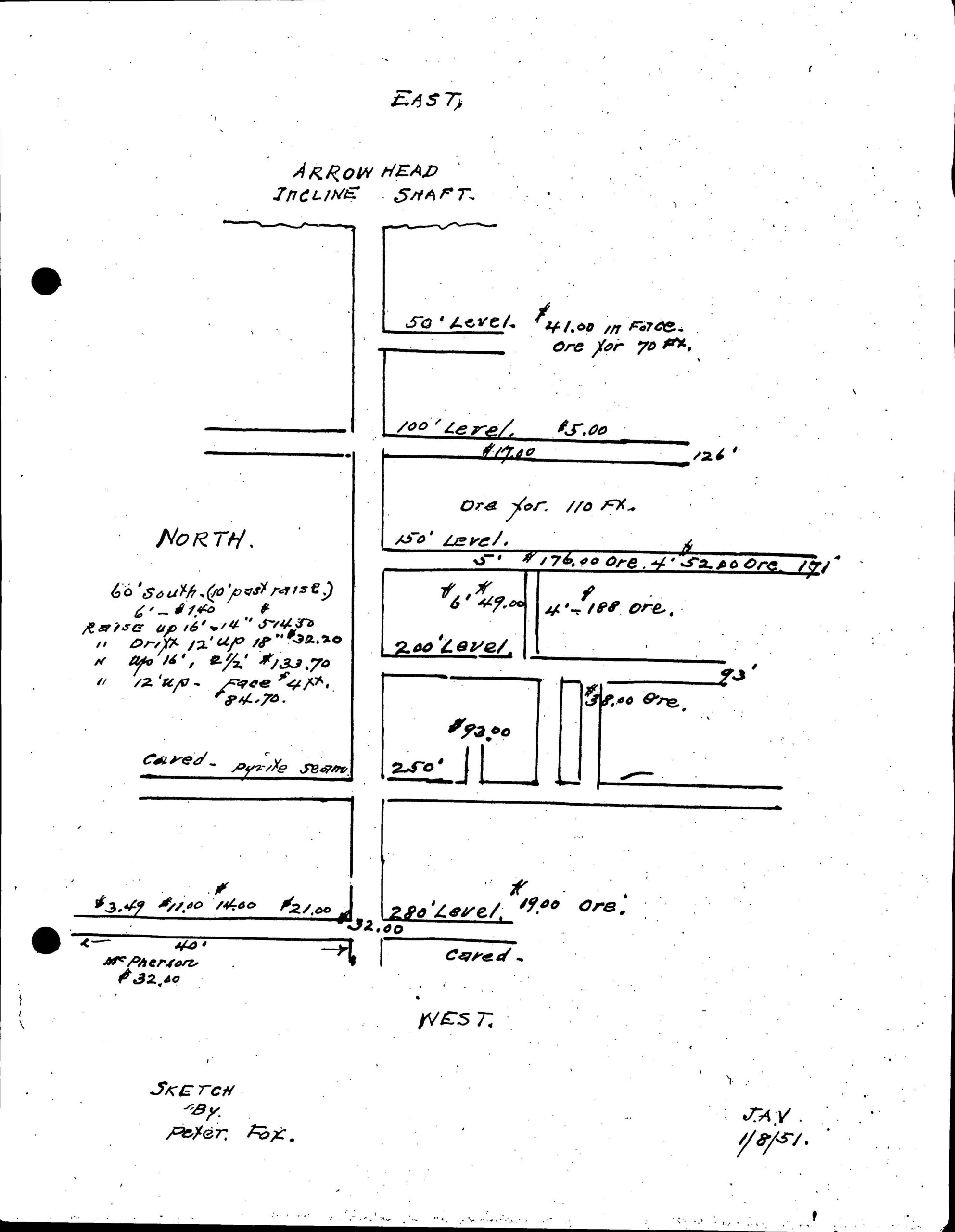



Sold
Click to read more...
Property Overview
The Sweetwater Mine is a gold and silver property. Previously known as the Arrowhead Property. The mine was noted as a tungsten mine in 1951 when the Sweetwater Mine, a moniker for the Arrowhead, attempted to gain a federal grant to mine Tungsten. There were Copper sulphides extracted with minimal values in tungsten. Sweetwater tied the Arrowhead shaft to their project and in 1959 the Arrowhead shipped two cars of ore which showed a return of gold, silver and copper but no tungsten.
The mine is very old. There are reports that there were old cuts and digs when the site was "discovered" in 1838. The gold values were immediately visible and the mine was worked near the base of the canyon for placer gold and light underground development. The mine was worked intermittently from 1860-1898 by a small group of "Spanish" miners. These miners were thought to be working the mine illegally and they were chased off (or killed) by a vigilante mob. The mine was again in production from 1901-1938. There was no official record of any production but ores sent for processing indicated the miners were highgrading a gold ore body in some sort of skarn. The mine was acquired by CONOCO in 1965 and in 1976 a full sampling and drill program was undertaken. This defined the gold, copper and other values in the Arrowhead Mine as well as the Risue Canyon region. The mine was sold by CONOCO to ASCARO in 1981. ASCARO sold the property to RISUE Mining in 1985 for $600,000.00. No work of significance has been done since.
J.A. Vandergrift, Mining Engineer, wrote a detailed report on the site in 1951. He cited gold values as high as 14 ounces to the ton with an average gold value of 1.25 oz. to the ton. He also reported 3-12% copper. The mine has not been commercially developed since this time. The gold and copper ores are visible in the workings.
The mine consists of two main camps. The lower camp, near the base of Risue Canyon road was the later camp. The Lower Camp has a haulage tunnel that leads into the workings of the Arrowhead. It is assumed that the ores were separated and shipped from the lower camp. The upper camp is the older of the workings. The Upper Camp consists of at least two adits and a shaft that pre-date 1900. There is a large open trench that was cut by an excavator, assumed to have happened while CONOCO was in control of the property. This cut exposes two adits and multiple open stopes.
Gold Rush Expeditions, Inc surveyors mapped the lower workings of the mine and some sections of the upper mine. There is stabilization work to be completed to make the upper workings safe for access. Assays were taken from the surface (dumps and high-grade) and from the subsurface (veins and chip samples). Surface assays average 0.38 oz./T in gold and 16.6 oz./T in silver. Subsurface samples were pulled from veins and pockets of chalcopyrite and averaged 1.7 oz/T in Gold and 0.5 oz/T Silver.
There is visible gold in many places in the subsurface workings. The dumps at the surfaces show very little, they are sulfides which have largely broken down from exposure to the elements. However, samples can be taken by shoveling the decomposed material into a bucket and sending for assay.
Access is simple and direct via a 4wd road leads to the lower camp. The road to the upper camp is rutted and has some off camber sections that may require an ATV or similar.
Make no mistake, this is a high grade gold mine. It has yet to be fully developed but could easily be worked by hand with no permits.
This is an ideal spot for a small miner to begin development which could work quickly into a much larger mining site. The gold deposits are easily defined and there is good documentation of the general direction of the veins and deposits. The gold is native and easily settles out on a shaker table or small sluice.
This is not a surface working. The value in this property is underground and the ability to extract that ore from underground.
Gold Rush Expeditions, Inc. does offer mining consultation services and assistance with permits for a small fee.
Training courses for underground work and exploration can be found here: https://stayoutstayalive.com/training/
The Sweetwater Mine is a gold and silver property. Previously known as the Arrowhead Property. The mine was noted as a tungsten mine in 1951 when the Sweetwater Mine, a moniker for the Arrowhead, attempted to gain a federal grant to mine Tungsten. There were Copper sulphides extracted with minimal values in tungsten. Sweetwater tied the Arrowhead shaft to their project and in 1959 the Arrowhead shipped two cars of ore which showed a return of gold, silver and copper but no tungsten.
The mine is very old. There are reports that there were old cuts and digs when the site was "discovered" in 1838. The gold values were immediately visible and the mine was worked near the base of the canyon for placer gold and light underground development. The mine was worked intermittently from 1860-1898 by a small group of "Spanish" miners. These miners were thought to be working the mine illegally and they were chased off (or killed) by a vigilante mob. The mine was again in production from 1901-1938. There was no official record of any production but ores sent for processing indicated the miners were highgrading a gold ore body in some sort of skarn. The mine was acquired by CONOCO in 1965 and in 1976 a full sampling and drill program was undertaken. This defined the gold, copper and other values in the Arrowhead Mine as well as the Risue Canyon region. The mine was sold by CONOCO to ASCARO in 1981. ASCARO sold the property to RISUE Mining in 1985 for $600,000.00. No work of significance has been done since.
J.A. Vandergrift, Mining Engineer, wrote a detailed report on the site in 1951. He cited gold values as high as 14 ounces to the ton with an average gold value of 1.25 oz. to the ton. He also reported 3-12% copper. The mine has not been commercially developed since this time. The gold and copper ores are visible in the workings.
The mine consists of two main camps. The lower camp, near the base of Risue Canyon road was the later camp. The Lower Camp has a haulage tunnel that leads into the workings of the Arrowhead. It is assumed that the ores were separated and shipped from the lower camp. The upper camp is the older of the workings. The Upper Camp consists of at least two adits and a shaft that pre-date 1900. There is a large open trench that was cut by an excavator, assumed to have happened while CONOCO was in control of the property. This cut exposes two adits and multiple open stopes.
Gold Rush Expeditions, Inc surveyors mapped the lower workings of the mine and some sections of the upper mine. There is stabilization work to be completed to make the upper workings safe for access. Assays were taken from the surface (dumps and high-grade) and from the subsurface (veins and chip samples). Surface assays average 0.38 oz./T in gold and 16.6 oz./T in silver. Subsurface samples were pulled from veins and pockets of chalcopyrite and averaged 1.7 oz/T in Gold and 0.5 oz/T Silver.
There is visible gold in many places in the subsurface workings. The dumps at the surfaces show very little, they are sulfides which have largely broken down from exposure to the elements. However, samples can be taken by shoveling the decomposed material into a bucket and sending for assay.
Access is simple and direct via a 4wd road leads to the lower camp. The road to the upper camp is rutted and has some off camber sections that may require an ATV or similar.
Make no mistake, this is a high grade gold mine. It has yet to be fully developed but could easily be worked by hand with no permits.
This is an ideal spot for a small miner to begin development which could work quickly into a much larger mining site. The gold deposits are easily defined and there is good documentation of the general direction of the veins and deposits. The gold is native and easily settles out on a shaker table or small sluice.
This is not a surface working. The value in this property is underground and the ability to extract that ore from underground.
Gold Rush Expeditions, Inc. does offer mining consultation services and assistance with permits for a small fee.
Training courses for underground work and exploration can be found here: https://stayoutstayalive.com.training/
Acres
Commodities
Type
40
Gold, Silver, Copper
Lode
Underground Dev
Surface Dump
Tailings
2,500 feet
25,000 tons
N/A
Access
Features
4WD
High grade dumps, chalcopyrite, underground development. Started before 1800.
Gold Reserves
Silver Reserves
Copper Reserves
Platinum Reserves
Tungsten Reserves
Molybdenum Reserves
Undefined
Undefined
Undefined
N/A
N/A
N/A


(385) 218-2138
or use our contact form below